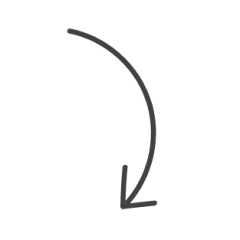Introduction

Make a tower
Who can build the tallest cardboard tower? But not all is fair in this competition, where students experience inequity first-hand and explore the emotions that arise.
Subjects
English, Science, HASS, Visual Arts, Design and Technologies, Health and Physical Education
Objectives
Preparation
Resources
Makedo Invent Kit
Upcycled cardboard
Activity
Lesson Steps
Part 1 - Tower Building
Divide students into four equal teams.
Begin by giving each team an equal number of Makedo tools and connectors and the same amount of cardboard, then explain the task: Using Makedo tools and connectors and upcycled cardboard, teams must compete to build the tallest tower.
Allow students a few minutes to begin planning and designing their tower (no building during this time) before explaining the following rules, which will give each team advantages and disadvantages:
Team 1 has all team members, except for two people, reallocated to other teams.
Team 2 must relocate all of their Scrus to either the far end of the room or outside the room. They can only access their Scrus by sending one person to collect one Scru at a time.
Team 3 is allocated a third less building time than the other teams.
Team 4 is given additional tools and cardboard.
Begin building time. Allow at least 30 minutes for students to work on their towers, then compare tower heights at the end.
Part 2 - Group Discussion
Reflect on the activity. How did you react when the conditions for the teams were changed?
Can you identify the emotion(s) you were experiencing? How do you feel about the way you acted in this unfair situation?
What is the difference between ‘reacting’ and ‘responding’ to a challenging situation?
🎓 Teacher note: Reacting is a more instinctual, impulsive and emotional response to a situation, whereas responding is more deliberate and thoughtful. Responding is more favourable than reacting.
There are techniques that we can use to help us respond rather than react when we’re faced with a challenge. What do you think could help you with this?
🎓 Teacher note: Students may share various techniques that work for them personally. Please suggest the following if they aren’t mentioned:
Take one big, deep breath (more if you have time).
Ask yourself whether what you’re about to do or say will actually be helpful. If not, take another moment to consider doing/saying something else, or maybe nothing at all.
Tune in and listen to your body. Does it feel hot, cool or tight? Do you have an upset stomach or sweaty palms? Can you feel your feet on the ground or your bottom on the chair? This can help you feel more mindful, connect with any emotions present and create a gap between the challenging event and your response.
Whether your group was advantaged or disadvantaged, this activity has given you a first-hand unfair experience. Where else do you see a need for more fairness both locally in your community and on a global scale?
🎓 Teacher note: For example, limited access in school for people with a disability, gender/race/sexual orientation discrimination, income discrepancies, poverty, etc.
Putting yourself in the shoes of others is called empathy. Why is empathy important? How can it be used to make the world a better place?
🎓 Teacher note: Empathy allows us to see things from another person's perspective so we can better understand their experiences and emotions and build stronger relationships. Empathy can mobilise us to help those in need and is a great agent for changemaking, whether it be as simple as checking in with a friend who looks down or fundraising for a global cause such as poverty.
To explore resource inequality, water security and more social justice content changemaking content, take a look at our Makedo Change program.
Reflection
Journal Prompts
In light of everything you’ve explored in this lesson, would you respond differently if you participated in this activity again?
Can you remember a time you have experienced empathy?
Are there any small actions that you could undertake to help make the world a more fair place?
Extension
Take It Further
Engineer Investigation - Invite students to explore engineering and the Engineering Design Process, then use their findings to make structural improvements to their towers.
What She Makes - Women are often responsible for making our clothes in developing countries. Invite students to explore the What She Makes resources to investigate how three brands they wear or know of stack up in creating a fairer fashion industry. Discuss what they learned and any feelings that arose while exploring the brands.
Design An Experiment: Students design an experiment to demonstrate inequality between four groups, like the one we did with our towers. One has ideal light, water, and nutrients, and the others have decreasing amounts of these.
Graph It: Students measure and graph the heights of their towers in a bar chart. On the X axis, give the group a degree of disadvantage, and then draw a conclusion from your findings based on the data.

